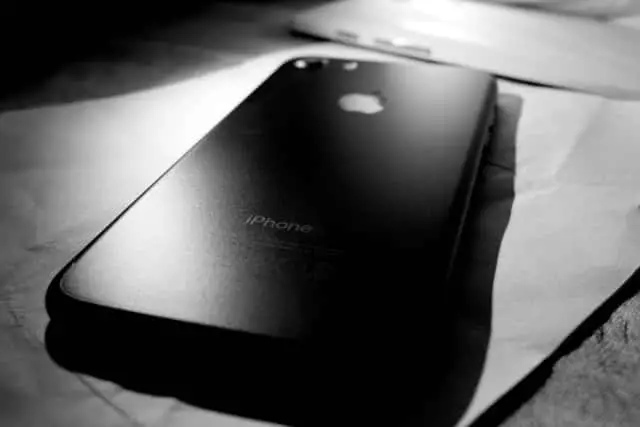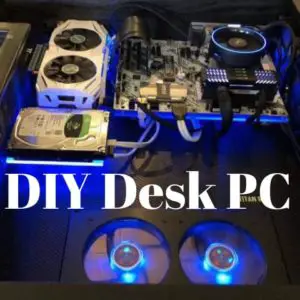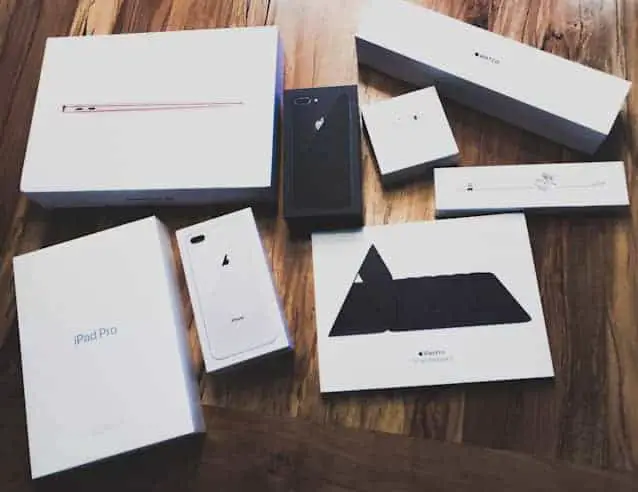The iPhone, Macbook, iPad… each evokes an image of sleek and compact design. Their parent company Apple has managed to integrate itself and its products into consumer consciousness even though, collectively, they control just a fraction of the tech market.
Are Apple devices truly the best on the market, or is it all just great marketing? The answer is more mixed than you might think but in case you are in a hurry, here’s the bottom line:
Are Apple products worth it? Apple products are worth the cost for those who value the user experience and ecosystem. The ease of use and tight integration between devices and services is valued over the ability to customize for many of Apple’s loyal customers.
We’ve broken the issue into their two main products, smartphones, and computers, as well as an entire section on peripherals and cross-device integration.
Smartphones

There are two main software competitors in the smartphone market: iOS and Android. iOS is Apple’s unique operating system designed to work on the iPhone and iPad.
It is a custom made operating system that is built partially using Apple’s own unique programming language (source). Google’s Android, on the other hand, is based on the open-source Linux operating system.
Android is used by many smartphone manufacturers including Samsung, Huawei, Sony, and others. This leads to a stark division between these two operating systems. iOS fans can expect a consistent user experience from device to device, whereas Android users will see greater diversity and flexibility in their choice of phones.
Reputation
The iPhone is often put in direct competition with the flagship of the Android side, Samsung. If we look at the market shares, a different story emerges.
Recently Apple controlled 14.7% of the smartphone market share and Samsung controlled 21.6%. However, Apple’s profit margin of 79% was four times Samsung’s 18% (source). Though Apple may not sell the most phones, they net a much larger profit — allowing them to invest more heavily in image and marketing, further entrenching them as a large player in the smartphone market.
A high-profit margin on a product means manufacturing costs are low and prices are high. So when it comes to Apple, be aware that you may be paying extra for the experience rather than raw processing power or a better display.
Quality and Performance
It is difficult to compare quality and performance between Android and iOS devices. Android controlled 85.1% of the market share in 2017, but Android is used as a mobile operating system by over twenty manufacturers (source).
This means that there is incredible variation in Android devices between manufacturers. In contrast to this variety, iPhones provide quality manufacturing and internal consistency.
Android manufacturers have to compete with iOS and between themselves. That means that they are more willing to push the boundaries of smartphone technology.
Since iOS has a dedicated following, Apple is able to sit back and wait to see what innovations are accepted by consumers and then integrate those into their phones. Things like wireless charging and HD screens were first implemented by Android and later adopted by Apple as they became more popular (source).
This allows Apple to ensure that iPhones are solid, well-rounded phones. But Android is usually where you’ll find the latest, if sometimes not the greatest, tech. However, iPhones do occasionally feature stand-out features. For example, in 2019 the new iPhone has the fastest processor on the market.
Pricing
You can buy an Android phone for as little as $100 or for over $1000. That’s a huge range of customer choice and quality and performance. iPhones usually start somewhere around $700 and easily break $1000 for higher-end models. Therefore, iPhones are more consistent, more polished and pricier whereas Android allows greater freedom of choice.
User Experience
This is Apple’s main focus. They’re dedicated to intuitive, fluid user experiences that are as enjoyable as the task itself. They insist on human review for things like apps, push notifications and timelines. In contrast, Android apps can be updated without review, which means your experience from app to app can be wildly different (source).
Android is based on Linux computer operating system. This means Android is organized similarly to a computer. You have deep access into its files, and you can organize and customize your Android experience to fit your exact specifications.
Even important settings like security, memory partitions, and the theme of your phone can be changed on Android. Apple doesn’t give you this level of freedom. Consistency between devices means they can’t allow users to tinker with critical features. However, that consistency means generally smoother operation and higher quality software.
There are Android phones that not only allow software customization but also allow and even encourage the addition of new batteries and memory-expanding SD cards. Apple is ardently against this, going so far as to develop their own screws so that it is incredibly difficult to get into the guts of the phone (source).
This causes an issue with repairability. Apple wants customers to use only its stores for maintenance, whereas Android’s multipurpose mentality allows for many high-quality third party repair options.
This is highlighted in this PCMag article that discusses how a $100+ repair at an Apple store can be done for as low as $29 dollars at a third-party location.
But Android’s focus on innovation and competition isn’t always a good thing. The most glaring example of the dark side of Android is operating system compatibility.
Today nearly 60% of active Android phones are running an operating system that is over two years old. Compare that to Apple’s smartphones where 88% use the most recent version of iOS (source).
Android is published by Google, tweaked by manufacturers like Samsung, and then further changed by carriers like Verizon. This process takes a long time and introduces a lot of inconsistencies between Android smartphones. This causes updates to be slow and unprofitable for the companies involved.
In contrast, Apple controls all aspects of its devices from the manufacturing to the programming, so they can easily plan for reverse compatibility. This makes iPhones more future proof and secure against modern cyber threats than Android (source).
Bottom Line
If your focus is on customizability, repairability, and a personally tailored user experience, choose Android. If you want ease of use, consistent updates, and enjoy not having to worry about possible software issues, go with Apple.
Computers

Mac vs Windows’ titanic and contentious struggle eventually finds its way into every business, home, and classroom across the globe. However, when we look at the numbers, we see it isn’t much of a debate.
As of 2019 Windows owns more than 86% of the market share for computer operating systems (source). But Windows is just an operating system. As with smartphones, there are many different computer manufacturers who use Windows whereas Apple controls both the hardware and software of its machines.
Reputation
Mac computers have a reputation for being sleek, design-oriented, and easy to use. This has been cultivated by its extensive and incredibly successful marketing campaign. This shows when they are directly compared to Windows even though Macs have less than a fifth the market share Windows enjoys.
Designers championed Mac computers when they first came out in the 80s because they were, objectively, the most user-friendly machines on the market. Today, the vast opportunity of choice that Windows manufacturers provide means this is more of a personal opinion rather than fact.
Macs do have a large array of gestures and keyboard shortcuts, but Windows is devising their own and, in some cases, copying Mac’s (source). Macs have traditionally laid claim to exclusive design programs, but even that’s changing.
There are features in some design programs that are objectively smoother or more powerful on Macs, but many are changing to be just as functional on Windows.
Mac’s reputation relies on tradition and legacy, and they produce some great machines. But in the computer market, it is clear the world has chosen Windows.
Quality and Performance
Macs are at times almost laughably expensive. This Vice article illustrates this perfectly, describing how someone built a powerful gaming PC for $999 — the same price of a Mac Pro monitor stand. Yes — just the piece of metal and plastic that holds up a monitor.
For such a hefty price tag you would expect quality and performance to be the best of the best. Though Apple’s quality is arguably the best in the industry, its price-per-performance can usually be beaten by PCs for half the price.
Below is a video I made when my daughter bought a gold Macbook Air (I called it Rose Gold in the video but Apple actually calls it “Gold”. Whatever, it looks pink when you see it in person. In this video I compare a few specs from the Macbook Air, priced at $1099 to a $500 HP laptop that I use on a daily basis:
Focusing on quality is what Apple does best. They don’t sell as many units compared to PCs, so what they do sell has to be good. Their modern computer cases are usually metal compared to many other manufacturers that use plastic.
And every bevel and edge on a Mac has been carefully designed and reviewed for customer satisfaction (source). Their operating system integrates extremely well with the hardware because they assemble both.
When you buy a Mac, you are buying an incredibly well-made piece of electronics and you really feel the quality of the build.
PCs are extremely varied. You can get everything from an inexpensive Chromebook to a desktop computer the price of a used compact car (links to Amazon). You can even do what my son and I did and build a computer in a desk.
Quality and performance vary as much as price when it comes to PCs. What we can say is that PCs usually offer the same specs as a Mac at a fraction of the cost. For example, the $1,099 MacBook Air is easily outperformed in almost all categories by the $500 HP Laptop that I mentioned earlier. But that’s not to say the user experience is the same (more on that below).
Pricing
There is a definite tradeoff here. If you are willing to settle for a less painstakingly well-designed machine, then PC is the obvious choice as they will generally have better specs for a lower price. If design and aesthetics are paramount in your purchasing decisions, then a Mac might be right for you.
CNBC dug into the premium price justification of Apple products in this video:
User Experience
MacOS and Mac computers are made by the same company so you can expect to have a more seamless marrying of the two within any given machine. In addition, they provide regular free OS upgrades, which keep you running fast and safe from viruses.
PCs usually run Windows, though a small number, .42% of the computer market, run Google’s ChromeOS (source). Windows has had some major hiccups in the past. Windows Vista was almost universally hated, and Windows 8 received a similar reception. However, their latest OS Windows 10 is popular and solves almost all of their previous problems (source).
MacOS comes with a bunch of powerful applications like GarageBand, iMovie, Apple Music, and fleshed out office programs. Windows does come with preloaded apps, but they pale in comparison to the richness and power of included MacOS programs.
However, Windows does support a wider array of downloadable apps. While a PC might not come with what you want, you can easily grab what you need from the internet.
When it comes to gaming, there is no competition. Windows has the lion’s share of this market, and so developers largely program for Windows (source). Macs can run some of the more popular titles, but Windows can also integrate with Xbox and PS4 to provide a true cross-platform gaming experience.
One major benefit PCs have is their market saturation. Most businesses and branches of local government use Windows. So whether you’re watching Netflix at home or browsing the web at a library, you probably won’t have to learn any new tricks.
Macs can be found in workplaces such as design studios, but they are much more niche, so Mac users will also have to get used to regularly interacting with Windows.
Apple also has had a problem with bad user experience decisions. A perfect example of this is when Apple switched to butterfly keyboards for the MacBook product line. The new keyboards could get dust and crumbs stuck under them extremely easily. This caused an unsettling among the masses of Apple loyalists.
Security
One benefit to Macs is that, since there are fewer of them on the market, there are fewer viruses written for them. This means that a Mac is inherently more secure than a PC against cyber threats (source). But PCs are by no means defenseless, and there are many third-party security programs you can buy to further mitigate the threat of viruses.
Repairability
Finally, when it comes to repairability, Macs have the same issues the iPhone does. They are needlessly expensive to repair in the Apple store. A CBC article reports an Apple store wanted over $1,200 for a simple repair that a third party store did in less than twenty minutes, for free.
This is seriously bad news for a company that wants its customers to only use their services. PCs can be repaired anywhere by anyone at bargain prices if you find the right retailer. It should be noted that both PC and Mac offer great warranties that can ease the costs of repair.
Presentation

Apple carved a unique place in the electronics sector not only with its product offerings but the attention to detail of packaging and presentation. They transformed the unboxing of a product from a process to an “experience”, sweating the details of just how the opening of an Apple product should make a consumer feel.
Whereas the vast majority of companies packed boxes with styrofoam to secure their computers in a box, Apple went to excruciating pains to make the design of the packaging worthy of showcasing the product inside.
The cords could not just be thrown in a box haphazardly. The manual tossed in as an afterthought. Every accessory should have its place and there should be no question that it is part of something bigger.
This speaks to the artistry with which Steve Jobs viewed production. Every detail mattered.
Cross-Device Integration and Peripherals
As we move further into the digital age, we are beginning to invest more into the internet of things. The core of this concept is that our electronic devices should be able to communicate with each other in order to aid our daily lives.
Apple and its PC competitors implement this idea completely differently, and it is important for consumers to know just what they’re buying into.
The Apple “bubble” as it’s called, is the name for the sphere of communication encompassing apple devices. They call it their continuity, and it is incredibly polished.
You could be typing a message on your iPhone or iPad and seamlessly switch to your Mac to finish it up. This isn’t limited to phones and computers. The Apple Watch connects with your phone so you can check notifications, shuffle through your music playlist, and even reply to emails without getting your phone out of your pocket.
In addition, all of these devices can be used to control Apple TV, a streaming media player that lets you play games, watch movies, and use the internet right on your home TV!
This system is amazing until you try and integrate any non-Apple tech into the ecosystem. Apple’s smart speaker, the HomePod, won’t even connect to a Windows or Android device. In contrast, Google’s Assistant or Amazon’s Echo will allow any device to connect regardless of the manufacturer.
In addition, Apple uses as its digital assistant Siri, which is considered to be much less advanced than either Google’s Assistant or the Echo. Siri also doesn’t recognize many non-Apple apps. And when it comes to music streaming, you can only use the subscription-based Apple music and nothing else (source).
In contrast, Windows computers are designed to integrate with just about anything you want them to. They’ll work with non-Apple Bluetooth speakers, most smart TVs, both Android and iOS smartphones, and even console gaming systems (source).
On the other hand, you may have to download a company’s specific application and set up multiple different kinds of connections, so there is definitely more work involved than with Apple.
In this video, Renee Richie details Apple’s cross-integration ecosystem with impressive insight that only a long-time student of the company can do.
Bottom Line
Apple’s vertical integration, producing both the operating system and the machines it runs on, allows a level of interconnectivity unseen elsewhere in the market.
However, once you buy into the bubble, you are pretty much stuck there. So before investing in an Apple device, make sure you can connect it to your other devices, or think about getting into intricacies of the PC/Android ecosystem.
Conclusion
Apple manufactures high-quality products with (mostly) strict quality assurance and a user experience worthy of the premium pricing. Aside from a few calculated errors, they have provided the majority of their customers with a simple and reliable product line that is deserving of its reputation.
Your products need to reflect your needs, so focus on the features you value most. If you want the best-built device on the market, Apple is a great choice. If you want seamless transitioning between similar devices, Apple wins out.
However, if you want a jack of all trades device, the most bang for your buck, easy and cheap repairs, and don’t mind being more careful about cybersecurity, then try an Android or PC. Ultimately, you need to decide what’s best for you.

